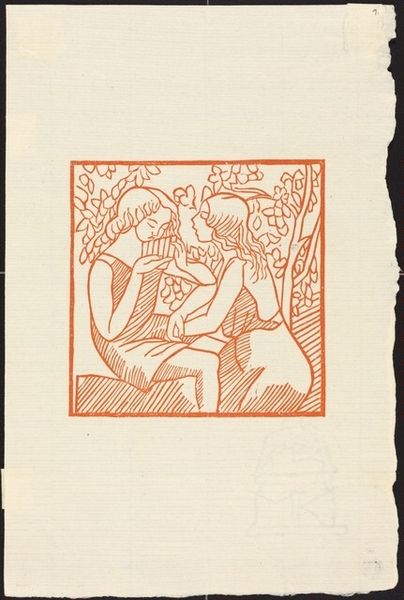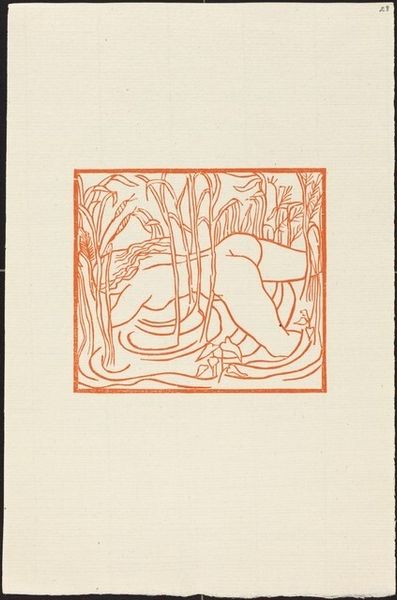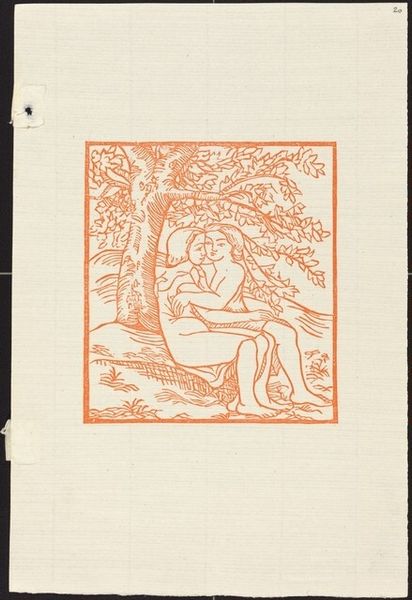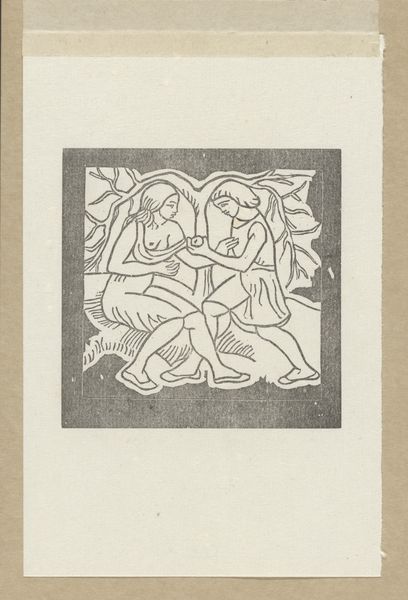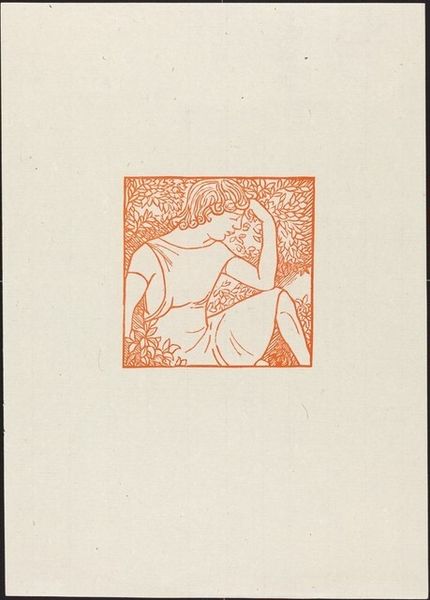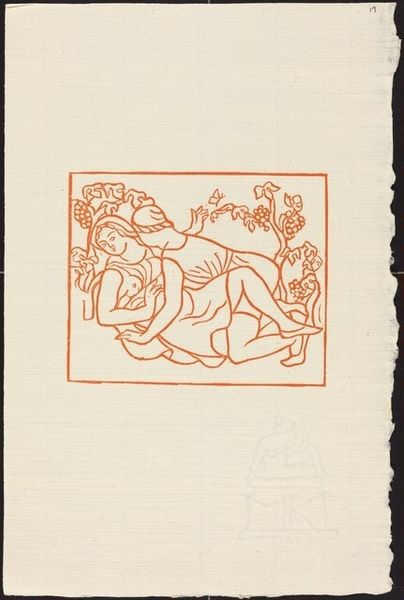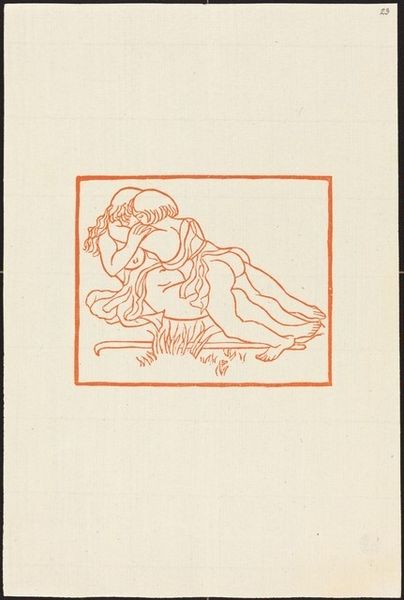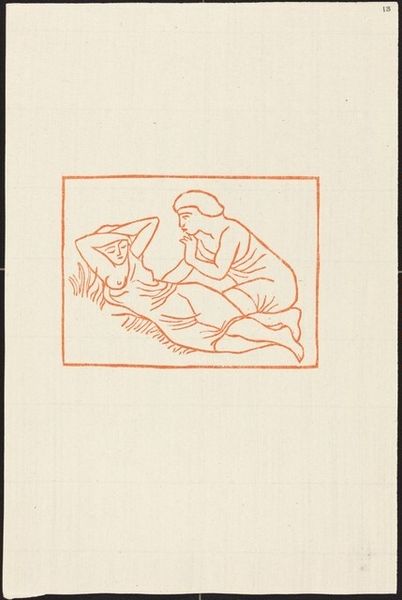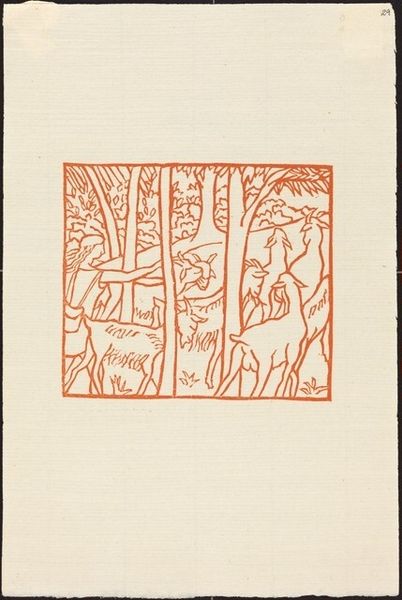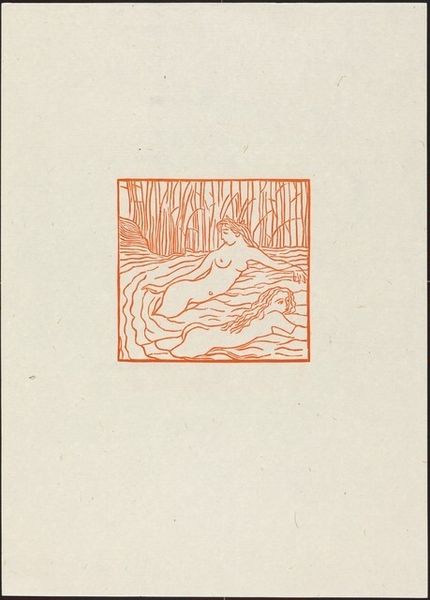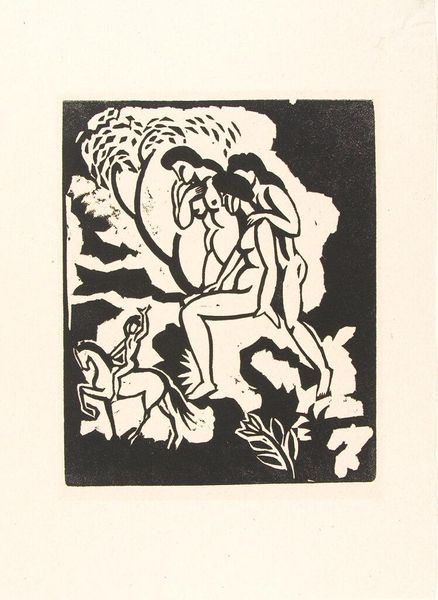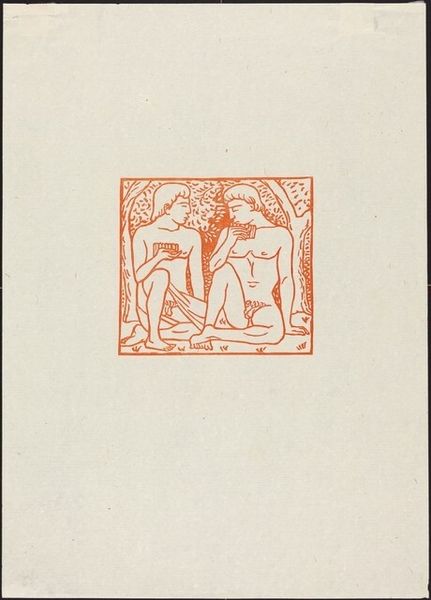
First Book: Daphnis Playing His Pipe for Chloe (Daphnis jouant de l'harmonica pour Chloe) Possibly 1937
0:00
0:00
Copyright: National Gallery of Art: CC0 1.0
Curator: We are looking at Aristide Maillol's "First Book: Daphnis Playing His Pipe for Chloe", believed to be from around 1937. This work uses the medium of a linocut print. What is your initial response to this piece? Editor: The overwhelming simplicity is striking. It's bathed in this single, earthy orange hue, creating a warm, almost nostalgic mood. The blocky nature feels almost archaic. Curator: The composition adheres to a classic figuration style embedded within a carefully structured landscape. Note the parallelism, particularly between the figures and the surrounding arboreal motifs. It suggests a visual rhyme, subtly linking humanity to its environment through form. Editor: Exactly, that linocut method Maillol used emphasizes the physicality of art-making. Carving away at the linoleum, the artist's labor is quite evident. Think of the force needed to cut the image into the block to leave behind those raised lines to receive the ink! This wasn't some easy brushstroke. Curator: The use of the linocut underscores its status as a reproductive medium. The linear precision achieves both graphic clarity and allows for a democratization of distribution. We cannot neglect the implications of reproducibility for our understanding of art's accessibility. Editor: I agree, the nature of printing allows for widespread access. It removes it from the rarefied world of one-of-a-kind paintings, and puts art directly into the hands of ordinary book readers and collectors of such prints, possibly challenging existing cultural hierarchies. Curator: Consider, too, how the lines function autonomously, not merely representing but also creating depth. Their arrangement gives shape to volumes, defining form through careful contrast, resulting in what we could consider a meditation on love and art in pastoral Arcadia. Editor: Looking closer at the execution and the process allows us to understand its social function too. These aren’t passive images, but the results of real work by the artist impacting people through prints. Curator: This image of pastoral love really demonstrates how artistic traditions inform, reinforce and challenge one another. Editor: Yes, it brings forward questions of access, artistic process, labor, and consumption that shape our experience with art.
Comments
No comments
Be the first to comment and join the conversation on the ultimate creative platform.
